Each owner of his household plot always tries to highlight a small corner of the Earth to create a garden, which will continue to provide delicious and healthy vegetables. Gardeners are trying to accommodate the most major vegetables, among which onions, greens, cabbage, carrots, tomatoes and garlic are particularly popular. In a special honor there is garlic, the healing strength and taste of which everyone knows. This aromatic vegetable is among the first sitting on the bed in the spring or autumn. However, it is worth remembering that garlic is winter and summer or spring. The main difference between summer garlic - the duration of its storage. Delicious and useful harvest can be easily preserved to a new harvest, while not losing the beneficial properties of vegetable. Summer garlic, landing and care for which is pretty simple and understandable, will delight gardeners with a rich and tasty harvest.
In order for the whole cold season to commeromate vegetable and dishes with its addition, in this article we will consider the features and description of summer garlic, we give a detailed description of the most popular varieties of culture. We note the important rules for agrotechnics of growing summer garlic, the conditions for its storage and care.
Features and morphological description of summer garlic
Garlic has a very long story. This healthy vegetable was known in the days of the ancient Greeks, which appreciated its taste quality, and especially therapeutic properties. In those days, garlic was actively used as an antidote when snake bite. Therefore, it is often possible to meet the national name of garlic "Snake Grass". With these same goals, this fragrant vegetable and ancient Slavs were used. Garlic begins its own cultural ascent on the territory of Asia, namely the mountainous terrain of Uzbekistan, Turkmenistan, Tajikistan, Pakistan, Afghanistan and the northern part of Iran. It was in these territories that garlic began to grow seriously, which was simply an indispensable part of many dishes around the world, including the famous Asian acute treats.
Summer garlic is a long-term grassy culture, which refers to the big roar of the onions and the Amarillic family. Modern scientists found out that the garlic occurred from Luke Longostroconse, so there is nothing surprising that these two cultures belong to one family. This fragrant and sharp vegetable has long gained enormous popularity not only in cooking, but also in folk medicine. To date, it is known about the huge number of useful elements and vitamins that are contained in summer garlic.
Scientists breeders around the world are constantly working in terms of removing new varieties of this type of garlic, which would have greater resistance to temperature changes, higher harvest and long-term storage. Before planting summer garlic, it is important to understand in detail the features of this plant, its differences from winter garlic
Summer garlic description:
- Garlic or Allium Sativum is a perennial bulbous plant, which is grown in culture as an annual vegetable. This species can be divided into two groups, depending on the landing time: Summer garlic and winter. Summer garlic in the scientific world is called Yarov, and winter - see.
- Summer garlic does not use such popular as winter, but it is recommended to plant many gardeners on its plot. This is due to the fact that it is summer garlic that is customary to use in the healing drugs and in the preparation of delicious sophisticated dishes.
- Landing summer garlic is a bit more complicated in winter, but as a result, you can get a rich harvest of vegetables with excellent fierce.
- The most valuable part of this vegetable is a bulb. At summer garlic, it has a rounded shape, slightly flashed, is tightly covered with a large number of thin scrapers, which reliably cover the contents of the bulbs of garlic. The top scales are dry, and the internal is a bit wet and thicker. The shade of the crooks may be the most different: whitish, with a pink shade, grayish, yellowish and even violet.
- The bulb consists of fractions or children. Each such a lurch is covered with rigid and dense skin. In the form of kids are oblong, in the middle a little thickened, with a convex surface. If you look at them in section, then its form resembles a triangle.
- Summer garlic in a bulb may contain up to 30-50 teeth.
- All the bulbs in this variety of garlic are located on the spirals - the closer to the center, the smaller the slices are.
- Summer garlic leaves are different from Luke representatives. They are long, narrow, lanceal sheet plates that have a sharpening from above and characteristic chute in the middle. At the bottom of the leaf killeum.
- Sheet plates can be represented or drooping. In the width of garlic leaf can reach 1 cm, and in length to grow about 30-100 cm.
- It is worth noting that each subsequent leaf grows from the sinus of the previous sheet, which creates a dense base.
- The leaves have a rich green shade.
- From the middle of the base, the flower arrow of 150 cm long can grow. A characteristic feature is that on the end, the flower is tightened and ends with an umbrella inflorescence.
- It erroysly the opinion that the seeds ripen in these inflorescences. It is absolutely incorrect, since the fruit of garlic consists not of seeds, but from the bulbs, with which the vegetative reproduction can be carried out. Seeds of this culture can be found only in decorative species.
- Summer garlic does not give a color-point arrow, with the exception of one variety, so its cultivation is carried out only with the help of robes-kids.
- This variety of culture has good resistance to spring frosts.
What is the difference between winter garlic from summer
As noted above, garlic is divided into two varieties: summer garlic and winter. Such a division is based on the time of planting culture in open ground, however, and in addition, a number of differences and features of two groups of garlic can be distinguished, which are practically equally popular with robmer gilders.
- First of all, the main difference between winter garlic from summer is the landing date. The planting of winter garlic is carried out in the fall before the onset of cold weather, and the planting of summer garlic in the spring. Winter garlic can perfectly winter under the snow, summer also has good cold resistance.
- The bulb of the winter garlic consists of large teeth and a central rod of the flowerose. In this case, the teeth can be no more than 8-10 pieces. The summer garlic in one bulb may contain up to 30 pieces, but a smaller size.
- The taste of winter garlic is more rich and sharp, summer garlic has a mild taste.
- Winter garlic always releases an arrow with air bulbs, which can later be used to multiply. In summer garlic, the flowerines are not formed, except for one variety - "Gulliver".
- Winter garlic gives more harvest and larger bulbs heads, in summer garlic yields are lower and smaller bulbs.
- The main feature and difference between summer garlic from wintering - storage time. It can be stored on average 10 months, and under favorable conditions and up to 1.5 years. The fierce of winter onions is only 3-4 months, after which its tooths become sluggish and lighter and lose all their useful qualities.
- Summer garlic is multiplied by slices, and for the breeding of winter it is suited several ways: teeth, alone, air bulbs.
The most popular sorts of summer garlic
All the varieties of spring garlic can respond to changing climatic conditions, so scientists are divided into early, the middle-air and late varieties of culture, which differ in the duration of the ripening of the bulbs. Consider the most popular yields of spring garlic, which prefer to grow domestic gardeners.
- Grade "Gulliver". This is one of the most popular and used varieties that have the most different distinctive qualities. It is a medium-sighted grade. It has good yield and resistance to various diseases. The bulbs of the Gulliver variety are considered one of the largest, the average weight of one head can be 100-150 grams, in rare cases it comes to 200 grams. The whole bulb is covered with a gray husk, consists of 5-6 large cloves. The taste of such garlic is very sharp. The harvest can be stored about 8-9 months.
- Sort of summer garlic "Alasky." This is a domestic variety of Siberian selection, which is also very popular. It is a secondary variety of excellent resistance to temperature drops. This type of arrows does not produce and removed mainly for the regions of Western Siberia, although the variety can be grown in other territories. The mid-size heads, the weight of one on average can be approximately 35-40 grams. One lack of a Siberian variety of summer garlic is quite low immunity.
- Grade "Sochi-56". It is an early sort of summer garlic, which does not release the arrows. This garlic was loved by gardeners with excellent immunity to various diseases and resistance to cold. It is characterized by a good stable harvest of rather large bulbs. The weight of one head on average is approximately 55 grams. The bulb consists of about 30 slight teeth. It is characterized by garlic to the peninsula and a long storage period, which is about 1.5 years.
- Grade "Elena". This is a mid-range grade of summer garlic, which was declined specifically for the southern regions. It has good immunity and resistance to temperature drops, which allows you to grow summer garlic Elena and in the territories with short and cool summer. The grade does not release the arrows, pleases with a stable harvest of dense, medium-sized bulbs. The weight of one bulb can be an average of 35 grams, while containing up to 10-16 of the branches of the peninsula. This variety has a distinctive feature - it can be planted under the winter. Vintage is stored up to 2 years.
- Sort "Sail". It is a variety of average ripening time, which has the ability to shorter. This summer garlic has excellent resistance to diseases and pests, a long-term storage period and a stable harvest. The bulbs have a rounded medium-sized form. The weight of one head can be approximately 35-45 grams, contains up to 9 teeth.
- Grade "Permyak". It is a non-thinning mid-freed variety, derived specifically for the northern regions. With it, you can successfully land the summer garlic at the Urals. The weight of one head can be approximately 35 grams, with this bulb consists of 15-16 teeth with a very sharp taste, which is due to the presence of essential oils. Pretty low yield can be stored for 10 months.
- Victorio variety. It is a mid-range grade of summer garlic that does not produce arrows. It has good and stable yield, as well as strong immunity. The bulbs are dense, weighing up to 40-45 grams, consist of about 10-13 teeth with moderate sharp taste. The crop can be stored for 8 months.
- Sort of summer garlic "Abrek". The mid-freed variety, does not release the arrows, it differs intensively sharp taste. The bulbs are not large, the weight of one can be approximately 25 grams. In this case, garlic head consists of 14-15 teeth. You can store only 7 months.
- Grade "Caleshor". This is a grade of summer garlic of French elite selection, which is very popular with many gardeners. It has high resistance to various diseases and can please a good harvest. The bulb in diameter can be an average of 4.5-5.5 cm, consists of 16-20 sufficient large teeth.
How to plant summer garlic: phased instruction
The cultivation of summer garlic requires a little more effort than landing and care for overponsibly, since the first is more capricious to the landing and storage conditions. However, if you wish, you can quickly cope with all the nuances of landing and get a tasty and healthy vegetable as a result. Let us consider in more detail all the main stages of preparation for landing and actually disembarking teeth in open ground.
Stage 1. Selection and preparation of Summer garlic planting material
- One of the most basic stages of landing of garlic summer is the choice of high-quality and healthy planting material.
- First of all, it is important to determine the specific grade of garlic. Experienced gardeners and summer residents are recommended to give preference to zoned varieties, i.e. Those cultures that were bred in your climatic zone. This will make a greater harvest. For example, the following sorts of summer garlic are suitable for planting in the Urals: nuggets, Shunut, Degtyar, Uralets, Permyak, Demidovsky.
- It is also important to remember that once a few years it is recommended to rejuvenate the planting material, i.e. Do not take it from the resulting harvest, and buy a new one.
- You can buy summer garlic in any proven garden center or shop.
- An important condition for obtaining a good summer garlic harvest is its proper storage. It is important to keep the bulbs all winter not separated in a cool room at a temperature of 7 degrees. If there is no such possibility, then the temperature is also suitable for 17 degrees. However, in this case, a month before the disembarkation, it is necessary to put the entire seating material in the refrigerator to activate all the forces of the seedliness.
- Shortly before landing from the bulb of garlic choose the teeth of the outer row, separated them from the Donets. At the same time, it is recommended to carry out the disinfection process with a weak solution of manganese.
- If you want to get faster shoots, then you can land into the open soil cloves with the sprinkle roots. To obtain young roots immediately after disinfection, summer garlic cloves wrap in a wet fabric and placed in the package. Next, it is closed and put it in a cool room, for example, in a refrigerator or cellar. To keep the planting material in such conditions it is necessary a couple of days, during which the teeth will have small roots - about 1 cm long.
Stage 2. Choosing a place for landing of summer garlic
- Selecting a seat for the landing of summer garlic is another condition for obtaining a large harvest of the useful vegetable.
- First of all, it is necessary to remember that summer garlic needs to be planted at one place once every 5 years.
- For this vegetable culture, a bright and sunny plot is suitable, which will be protected from the northern side of drafts and wind.
- It is also important to take into account where the garden is located with garlic. It must be planted on the elevated areas, as in the lowlands where moisture and snow accumulates, the teeth can refuse.
- When choosing a place to land, each garden should take into account which culture preceded the summer garlic. It is recommended to use the beds where the following cultures grew up last year: cucumbers, zucchini, cabbage, legumes and grain crops, spicy herbs. It is not recommended to land the summer garlic on the beds, where potatoes grew earlier, carrots. After Luka, garlic can be planted only after 4 years.
Stage 3. Choice and Soil Preparation for Summer Garlic Landing
- Summer garlic prefers to grow on fertile and indulged soils.
- For this vegetable culture, squealed or loamy soils with a neutral reaction are suitable.
- It is important that the soil contains a large amount of humus in the upper layers of soil.
- Preparation of the garden for planting summer garlic is carried out in the fall. To do this, the selected place is carefully leaving about 1 bayonet shovels.
- Simultaneously with the processing of the soil in the ground, it is necessary for each square meter to add half ancient, 3 glasses of wood ash and a bit of complex mineral fertilizer. In the spring, in front of the landing, the garden simply loose and flatter.
Stage 4. Summer garlic landing technology
- Summer garlic cloves in open soil are needed in early spring, approximately in mid-April or in early May. For the territories of the Urals or Siberia, the landing time is suitable in the middle or late May.
- For a full landing, it is important that the soil warms up to a temperature of 7-9 degrees.
- Before boarding, it is necessary to select high-quality and healthy planting material. You should not take bangs at the bulbs with a small amount of rally. Also choose elastic and holistic cloves. For landing, cloves are suitable weighing from 3 to 6 grams without visible damage. Separate the cloves from the Donets and prepare a few days before disembarking.
- Next you need to train the bed. To do this, at the selected place, be sure to align and break the soil and make grooves for sowing. The depth of grooves should be approximately 3-4 cm, and they need to be arranged at a distance of approximately 25-30 cm from each other.
- Summer cloths of summer garlic cloths are needed at a distance of 10-12 cm, and smaller slices are planted at a maximum distance of 8 cm. You can not press the cloves into the ground, as it can negatively affect the germination of seedlings.
- If garlic cloves have roots, then put them in the grooves need very carefully.
- After that, the landing is sprinkled with soil and mulched. This is necessary to prevent the evaporation of moisture and the formation of crusts on the surface. The mulch can use peat or straw.
How to grow summer garlic: secrets and nuances of care
Summer garlic care is simple enough, however, has a number of differences from growing winter species. Therefore, it is important to take into account all the characteristics of the summer or spring garlic, in order to in the end, get a rich harvest of a healthy vegetable culture.
- Watering. Unlike winter garlic, which can be perfectly done without watering, summer garlic needs regular moistening of the soil, which contributes to the active vegetation of the plant. The lack of moisture is evidenced by the yellowed tips of the leaves. During the period of active growth of leaves, which comes from spring and until July, summer garlic needs abundant irrigation. Then, when a bulb begins to form, 6 formed leaves are evidenced by 6 formed, the amount and frequency of irrigation is reduced, and by mid-August are completely stopped. This is due to the fact that moisture detains the development of garlic bulbs.
- Loosening and mulching. Periodically, bedding with summer garlic needs to be poured and loosen. To reduce the number of weeds, the soil on the beds is recommended to mulch the layer of straw. It will also reduce moisture evaporation.
- Fucking garlic summer. All the feeding of this vegetable culture are customary to combine with watering. The first application of fertilizers is carried out after the appearance of several leaves. At this stage, fertilizers are suitable with nitrogen content, such as infusion of a cowboy or an ordinary humus. Use fresh manure is not recommended, as it contributes to the manifestation of diseases. After about 2 weeks you can feed garlic with liquid mineral fertilizer. During the bunch of bulbs, you can use an inland of ash or a complex of mineral fertilizers.
- Diseases and pests of summer garlic. Most garlic varieties of this kind have a good immunity to various diseases and invasions of pests. However, occasionally plants can still be affected by triples, nematodes, ticks, onion flies, to combat whose special preparations. From diseases can be found white rot, fusariosis, black mold, roting of the Donets. To protect the summer garlic, it is important to properly comply with all agrotechnical events and regularly plunge ammonium sulfate plants in preventive purposes.
- Cleaning harvest and its storage. Cleaning garlic needs to begin in the second half of August, when two thirds of foliage yellowed and pozy. A couple of weeks before that, it is important to easily free the heads of garlic from the soil to give them the opportunity to conquer faster and dry. Out garlic is needed in dry weather. To do this, carefully pull the bulbs for the leaves and put on the bed for drying. Dry garlic outdoors for 5 days, after which it is transferred under a canopy. After complete drying, garlic cuts a bit of roots and shorten the leaves, leaving only 10 cm. Store summer garlic is recommended in wooden boxes, bags or woven baskets at 4-6 degrees or 16-17 degrees.
Garlic is an important part of any garden, and its summer variety is a huge pantry of useful vitamins and elements. Therefore, many gardeners advise not to fear difficulties in the cultivation of spring garlic, but boldly experiment. After all, landing and care for this vegetable culture is not a great difficulty, the main thing is to do everything correctly.

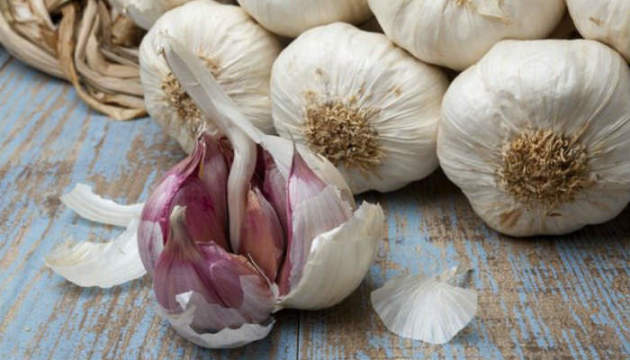
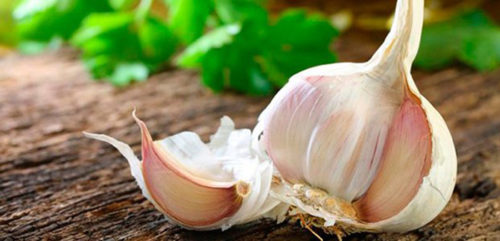
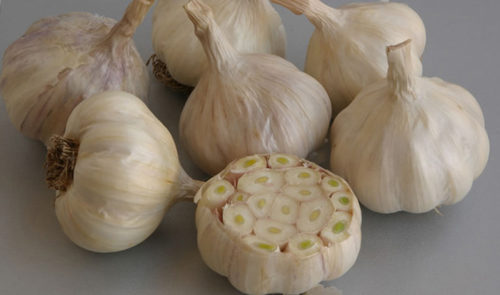
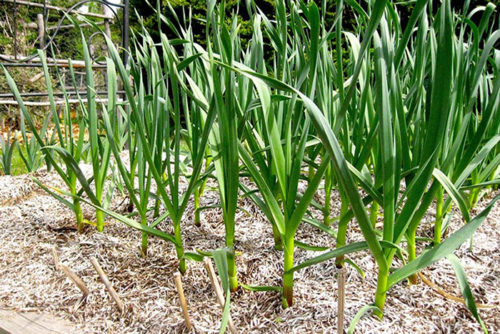
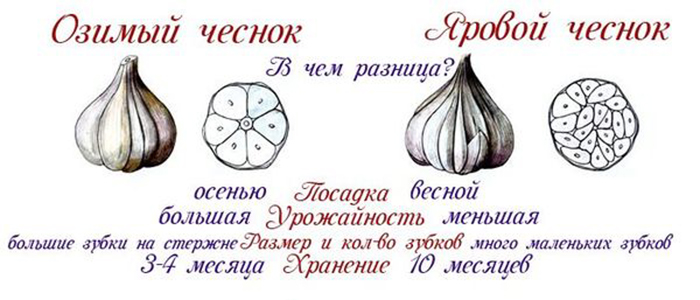
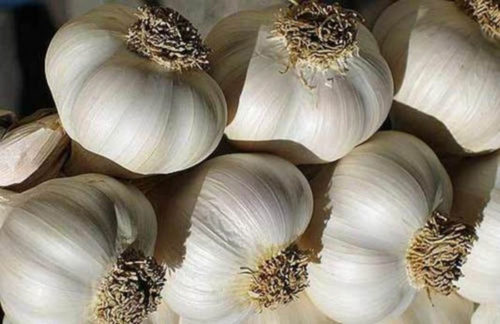
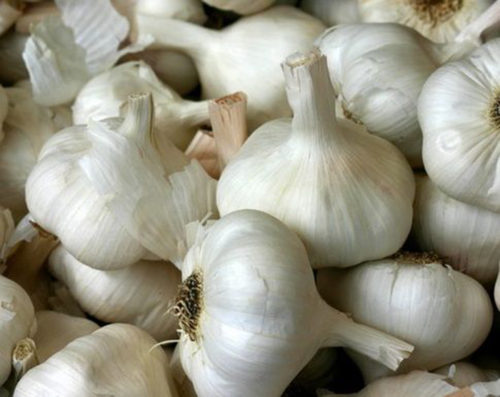
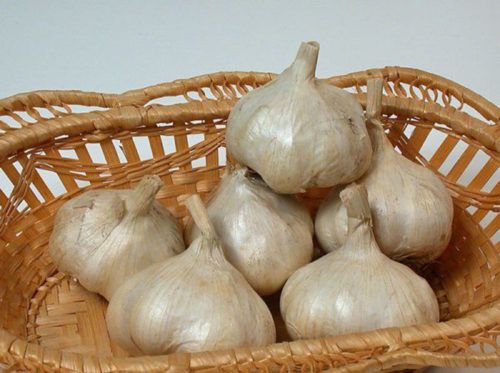
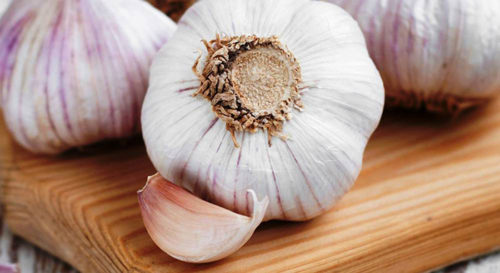
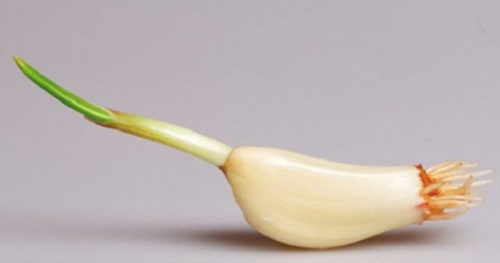
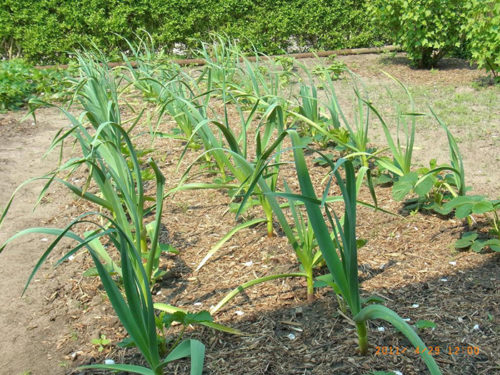
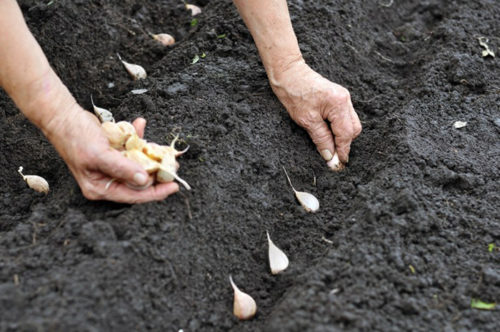
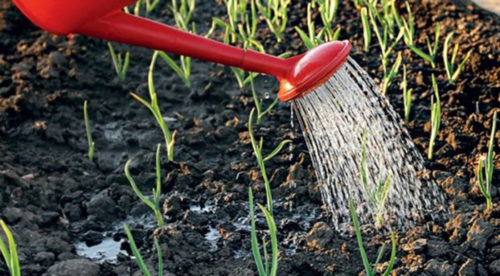
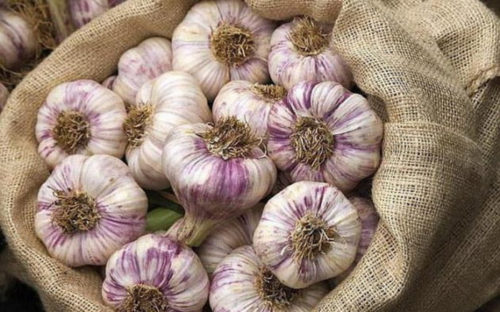












 Start a discussion ...
Start a discussion ...